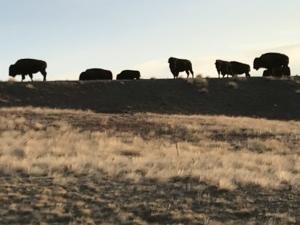 More Room for South Dakota Bison to Roam
More Room for South Dakota Bison to Roam
The Nature Conservancy has signed a new agreement with the National Park Service to help conserve one of its most
genetically valuable bison herds. Like Yellowstone National Park, bison from Wind Cave National Park in western
South Dakota have unique genes not found in other herds, and they also show no sign of interbreeding with cattle.
To preserve the Wind Cave herd’s genetic lineage well into the future, the National Park Service needs a population of 1,000
breeding bison. But Wind Cave, which is about one-tenth the size of Yellowstone, is not large enough to sustain that large
of a herd.
That is one of the reasons the Conservancy introduced Wind Cave bison to preserves in Illinois, Indiana, Iowa, Kansas and Missouri.
The new agreement will enable the Conservancy to bring more bison from Wind Cave to grow these herds and
establish new herds on additional prairies it owns and manages. “With the Conservancy’s satellite herds, we expect
we’ll be able to reach a breeding population of 1,000 bison through this agreement,” said Vidal Davila, park
superintendent. “That would enable us to conserve one of the oldest and most important bison herds in the Great Plains.”
